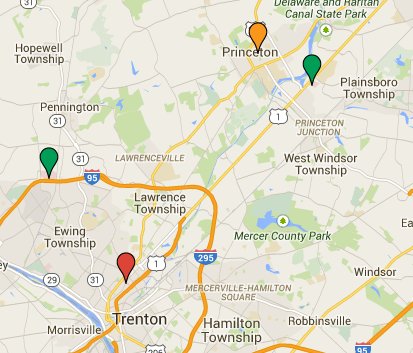Violence and NGO Attention with GDELT
Published:
I recently attended the PSU GDELT Hackathon where I got a chance to contribute to the R package GDELTtools. The experience inspired me to clean up and share my own explorations of GDELT. My colleague Anna Schrimpf presented a research plan looking at the incentive structure that NGOs like Amnesty International face when choosing which issues to focus on. I found her research agenda fascinating and wondered if it could be applied to different types of conflict.
To check, I took the three UCDP datasets on annual casualties from (1) battles related to civil or interstate war, (2) one-sided government attacks on civilians, and (3) violence between non-state actors from 1989 and 2011 and plotted total fatalities against the count of Media-reported NGO actions using GDELT. For each country-year, I count the number of actions by Amnesty International, Human Rights Watch, Oxfam, or the Red Cross that target an actor of that country in that year. The resulting plot below contains 2500 points spread across 170 countries.
Immediately Rwanda 1994 jumps out as an outlier with over 800,000 deaths and the USA in 2011 with over 1500 NGO actions. Zooming in to the area outlined in purple gives the following plot:
Again we have points along each axis. Along the Y-axis we see USA and Israel joining more tumultuous countries, about which Ron and Ramos have a nice discussion in Foreign Policy. Across the X-axis we see Sudan, DRCongo, and Ethiopia with many conflict casualties but little NGO targeting.
Any analysis of this data is clearly early and should be approached warily. This is only meant as a probe of GDELT’s potential. That said, I couldn’t resist running a negative binomial regression with the different types of violence and fixed effects by country and year. My expectations are that, controlling for country and year effects:
(H1) NGO action increases with violence
(H2) NGOs react most to violence against civilians (onesided)
(H3) NGOs are more responsive to government violence (onesided and battle)
| Estimate | Std. Error | z value | Pr(>|z|) | ||
| (Intercept) | .928 | .223E-01 | 4.155 | 3.25E-05 | *** |
| battle1000 | .129 | .0144 | 8.932 | < 2e-16 | *** |
| nonstate1000 | .108E | .0597 | 1.812 | 0.070012 | . |
| oneside1000 | .0651 | .0122 | 5.335 | 9.57E-08 | *** |
The results shown above suggest support for (H1) and (H3) as non-state violence is the only one not statistically significant at the .01 level. I was surprised at the similar results for battle and onesided deaths, but a quick look at the literature revealed similar findings for battle deaths (see Hafner-Burton and Ron 2012 and Ron, Ramos, and Rodgers 2005).
My own conclusion from this exercise is that GDELT has a lot of potential and will only get better as it is further tested and developed. I am especially excited about combining GDELT data with other datasets such as the UCDP violence data used here, even if doing so does lose GDELT’s temporal power.




 Map of past and current hospitals in the Princeton area.
Map of past and current hospitals in the Princeton area. University Medical Center of Princeton at Plainsboro: curved for your health
University Medical Center of Princeton at Plainsboro: curved for your health